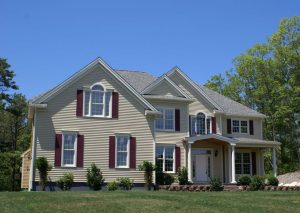Situated partly on the Great Plains and partly in the Midwest, Nebraska gets humid continental climate in the east and semi-arid climate in the western region, both climate areas being characterized by wide variations in terms of temperatures and in terms of the amount of precipitation as well. The summers are hot and the winters are cold in Nebraska and the state is also located in Tornado Alley, getting several huge storms each year, which also means that the building materials chosen by locals for their homes need to be able to withstand changeable, often very extreme weather and they need to be suitable for high and low temperatures alike. If you are currently in the process of choosing new siding for your Nebraska home, here is a short guide about the materials that work best in the area.

Vinyl Siding
The modern, synthetic material called polyvinyl chloride is becoming extensively used for manufacturing building components. The reason is simple: the material is versatile, in terms of usage as well as in terms of design; it is affordable, durable and resistant. Per siding and roofing Lincoln NE contractors, vinyl siding products can protect your home against the elements and against insect attacks for even 50 years without requiring too much maintenance and they also offer thermal protection, especially if suitable insulation is installed between the vinyl panels and the wall. Vinyl is a great choice in terms of added aesthetic value as well – you can find vinyl panels that are made to resemble wood and the products also come in a wide range of colors.
Like any material, vinyl also has some weak points: in extremely cold weather, the panels can become rigid and more sensitive to impact and the panels that get damaged cannot be repaired, they need to be replaced.
Plastic Siding
These siding solutions use synthetic material as well and are in many ways similar to vinyl, but they are stronger, more resistant to impact and they can emulate natural materials much more realistically. Plastic siding is usually more expensive than vinyl panels, but the material used for making plastic panels is much thicker, therefore plastic solutions are not only more resistant to impact, but they also offer better thermal performance. Plastic siding also comes in a wide array of color choices that will not fade for decades.
Fiber Cement Siding
These panels are made from a combination of cellulose, sand and cement, a mix that can be made to resemble wood and is very durable and resistant, too. Cement siding panels are affordable and with proper maintenance – yearly inspections and cleaning and re-painting every 4-5 years -, they can last on your building for at least half a century. What you must pay special attention to if you choose fiber cement siding for your home is to never let the paint and priming deteriorate on the surface of your panels – the special coatings fulfill the role of protecting the material from water penetration, which is especially important in cold weather, when the water changes its volume during the freezing and thawing process and can cause the cement to crack.
